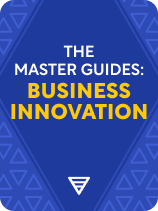

This article is an excerpt from the Shortform book guide to "The Master Guides: Business Innovation" by Shortform. Shortform has the world's best summaries and analyses of books you should be reading.
Like this article? Sign up for a free trial here.
Do you want your product to be the best in the market? What are Blue Ocean Strategy‘s recommendations for boosting innovation in business?
In Blue Ocean Strategy, innovation is described as one of the most important factors to consider when creating a product that acts as a better alternative to your competitors. Coming up with innovative products is easy when you carefully examine what your target audience is looking for.
To give your product a unique edge, keep reading.
Covering All Areas of Innovation
Innovating in enough categories is crucial for the success of disruptive innovation projects. In Blue Ocean Strategy, innovation is required in multiple areas. Authors W. Chan Kim and Renée Mauborgne argue that your ultimate goal should be to create not just a new product but a new and uncontested market that your product will dominate. This offers the best route to success, because if you try to merely compete with established companies in existing markets, you’ll end up with low profit margins and minimal opportunities for growth.
To spark ideas for innovative products, Kim and Mauborgne recommend considering your product from several angles:
- Consider all the different products that your customers could use to achieve the same goal through different means. For example, rock-climbing gear and video games are different in form and function, but they fulfill the same basic goal of connecting with friends in a thrilling environment. Ask yourself if you could combine desirable features from different alternatives to provide unique value.
- Consider what characteristics motivate your customers to buy higher-quality products at higher prices versus lower quality at lower prices. Ask yourself if you can create a unique offering by focusing on the characteristics they’re willing to pay extra for and eliminating the others.
- Identify underserved people in the purchasing chain. If the end user and the person with purchasing power are not one and the same, the end user may have pain points, or persistent problems, you can address to provide unique value.
- Consider what happens before, during, and after your product is used. Kim and Mauborgne note that products are rarely used in isolation. Ask yourself whether there’s friction between any of these handoffs that you could alleviate to create unique value. It might be as simple as bundling complementary products with yours.
- Kim and Mauborgne observe that most industries tend to gravitate toward either functionality or emotion. Consider making an emotional industry more functional by stripping away unnecessary extras, or making a functional industry more emotional.
- Consider the needs of non-customers. Ask yourself why some people don’t buy your current product or products in your industry. Can you develop a new offering to solve the problem that’s keeping them away?
Then, to help you visualize whether a new product idea provides unique value, Kim and Mauborgne introduce the blue ocean strategy chart. On the horizontal axis, you list the attributes of your product that your customers care about. The vertical axis represents how much each attribute is present in a product. You plot the value of each characteristic on the graph as a point, and connect the points to create a strategy curve, both for your product (or prospective new offering) and its leading alternatives. The result might look something like this:

Kim and Mauborgne point out that if your product’s path closely follows another product (like Product X and Product Y in our example graph) then you’re not providing unique value. You want your strategy curve to diverge significantly from every other company’s.

———End of Preview———
Like what you just read? Read the rest of the world's best book summary and analysis of Shortform's "The Master Guides: Business Innovation" at Shortform.
Here's what you'll find in our full The Master Guides: Business Innovation summary:
- The reason why most innovations never lead to growth or profits
- Key principles for implementing innovative ideas that deliver value
- Advice from seven leading experts on overcoming innovation challenges






